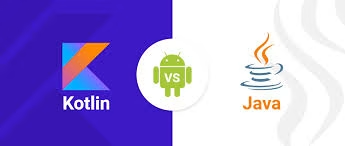Choosing the right programming language can significantly impact the success of your project, especially in the world of Android development. Java has been a staple for developers for decades, but Kotlin has emerged as a strong alternative, offering modern features and streamlined syntax. So, which one should you choose? This blog post will dive into the differences between Kotlin and Java, the industries and countries where Java thrives, and help you make an informed decision.
An Overview of Java
Java, launched by Sun Microsystems in 1995, has long been a cornerstone in the programming world. Known for its “write once, run anywhere” philosophy, Java’s versatility and stability have made it a popular choice for developing everything from web applications to large-scale enterprise systems. With a vast ecosystem, extensive libraries, and a strong community, Java remains a go-to language for many developers.
An Introduction to Kotlin
Kotlin, introduced by JetBrains in 2011, was designed to be fully interoperable with Java while addressing some of its limitations. Officially supported by Google as a preferred language for Android development since 2017, Kotlin offers a more concise and expressive syntax, which reduces boilerplate code and increases productivity. With features like null safety and coroutines, Kotlin brings modern programming paradigms to the forefront, making it an attractive choice for developers looking for a more streamlined coding experience.
What is the Difference Between Kotlin and Java?
When comparing Kotlin and Java, several key differences emerge that can influence your decision on which language to use:
- Syntax and Conciseness: Kotlin’s syntax is more concise than Java’s, allowing developers to write less code to achieve the same functionality. This reduces the chance of errors and makes the code easier to read and maintain.
- Null Safety: One of the most notable features of Kotlin is its built-in null safety. NullPointerExceptions are a common issue in Java, often leading to crashes and bugs. Kotlin addresses this by distinguishing between nullable and non-nullable types, helping prevent these errors at compile time.
- Coroutines: Kotlin’s coroutines provide a simpler way to manage asynchronous programming compared to Java’s traditional concurrency mechanisms. This makes Kotlin particularly well-suited for applications requiring efficient performance, such as mobile apps with background processes.
- Interoperability: While Kotlin is fully interoperable with Java, allowing developers to call Java code from Kotlin and vice versa, the reverse is not always as seamless. This interoperability ensures that existing Java codebases can gradually adopt Kotlin without a complete rewrite.
- Community and Resources: Java has a mature ecosystem with a vast array of libraries, frameworks, and tools, as well as a large, active community. While Kotlin’s community is growing rapidly, it doesn’t yet match the depth and breadth of Java’s ecosystem.
Kotlin vs. Java: Which is Better?
The question of whether Kotlin or Java is better doesn’t have a one-size-fits-all answer—it depends on your specific needs and project requirements. Here’s a quick rundown:
- Choose Java if:
- You’re working on a legacy system that is already built in Java.
- You need access to a wide range of established libraries and frameworks.
- You’re focusing on cross-platform development or server-side applications.
- Choose Kotlin if:
- You’re developing a new Android app and want to take advantage of modern language features.
- You prefer writing less boilerplate code and want to avoid common pitfalls like null pointer exceptions.
- You’re interested in more efficient asynchronous programming through coroutines.
Top Industries that Use Java
Java’s flexibility and robustness make it a favored language across various industries. Here are some of the top sectors that rely heavily on Java:
- Finance and Banking: Java’s security features and reliability make it ideal for developing financial applications, including online banking systems, trading platforms, and payment processing systems.
- Telecommunications: Many telecommunication companies use Java to build applications that handle vast amounts of data and provide reliable services to millions of users.
- E-commerce: Java powers many e-commerce platforms due to its scalability, which allows businesses to manage large volumes of transactions and user interactions.
- Healthcare: Java is often used in healthcare applications, from patient management systems to complex diagnostic tools, thanks to its stability and ability to handle large data sets.
- Government and Public Sector: Java is widely used in various government applications for managing data, automating processes, and providing secure services to citizens.
Top Countries that Use Java
Java’s widespread use is not limited to a particular region; it’s a global phenomenon. However, some countries stand out for their significant adoption of Java:
- United States: The U.S. leads the way in Java adoption, particularly in the finance, tech, and government sectors. Many major tech companies and startups alike rely on Java for their backend services.
- India: With its booming IT industry, India is a major hub for Java development, providing services to companies around the world.
- Germany: In Europe, Germany has a strong Java developer community, especially in the automotive and manufacturing sectors, where Java is used for complex systems.
- United Kingdom: The UK also sees extensive Java use, particularly in finance and telecommunications. The country’s strong tech sector drives much of this demand.
- Brazil: As a growing tech market, Brazil is seeing increased use of Java, particularly in its financial services and government applications.
Wrapping Up
Both Java and Kotlin have their strengths and are powerful languages in their own right. If you’re working within the Android ecosystem, Kotlin offers several advantages that make it an excellent choice for modern development. However, Java’s robustness and extensive resources make it indispensable in many scenarios. Ultimately, the best language for you will depend on your specific project needs and long-term goals.
FAQs
Q: Is Kotlin replacing Java?
A: No, Kotlin is not replacing Java. Both languages coexist, and Kotlin is often used alongside Java in Android development.
Q: Is Kotlin harder to learn than Java?
A: Kotlin is not necessarily harder to learn, but its more modern features and syntax can be unfamiliar to those who are accustomed to Java. However, many developers find Kotlin’s conciseness and safety features make it easier to work with once they get used to it.
Q: Can I use Java libraries in Kotlin?
A: Yes, Kotlin is fully interoperable with Java, meaning you can use Java libraries in your Kotlin projects without any issues.
Q: Which language is more popular for Android development?
A: While Java has been the traditional choice for Android development, Kotlin’s popularity has been rapidly increasing, especially since Google officially endorsed it.
Q: Does Kotlin offer better performance than Java?
A: In most cases, Kotlin’s performance is on par with Java. However, Kotlin’s features like coroutines can offer performance advantages in specific scenarios, such as handling asynchronous tasks.








